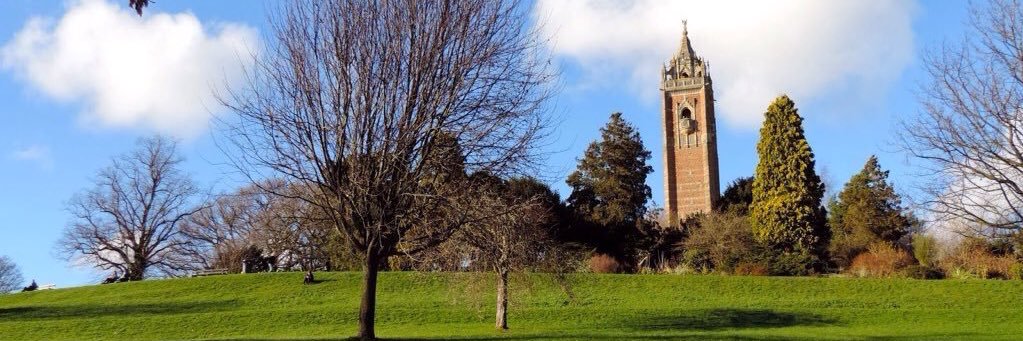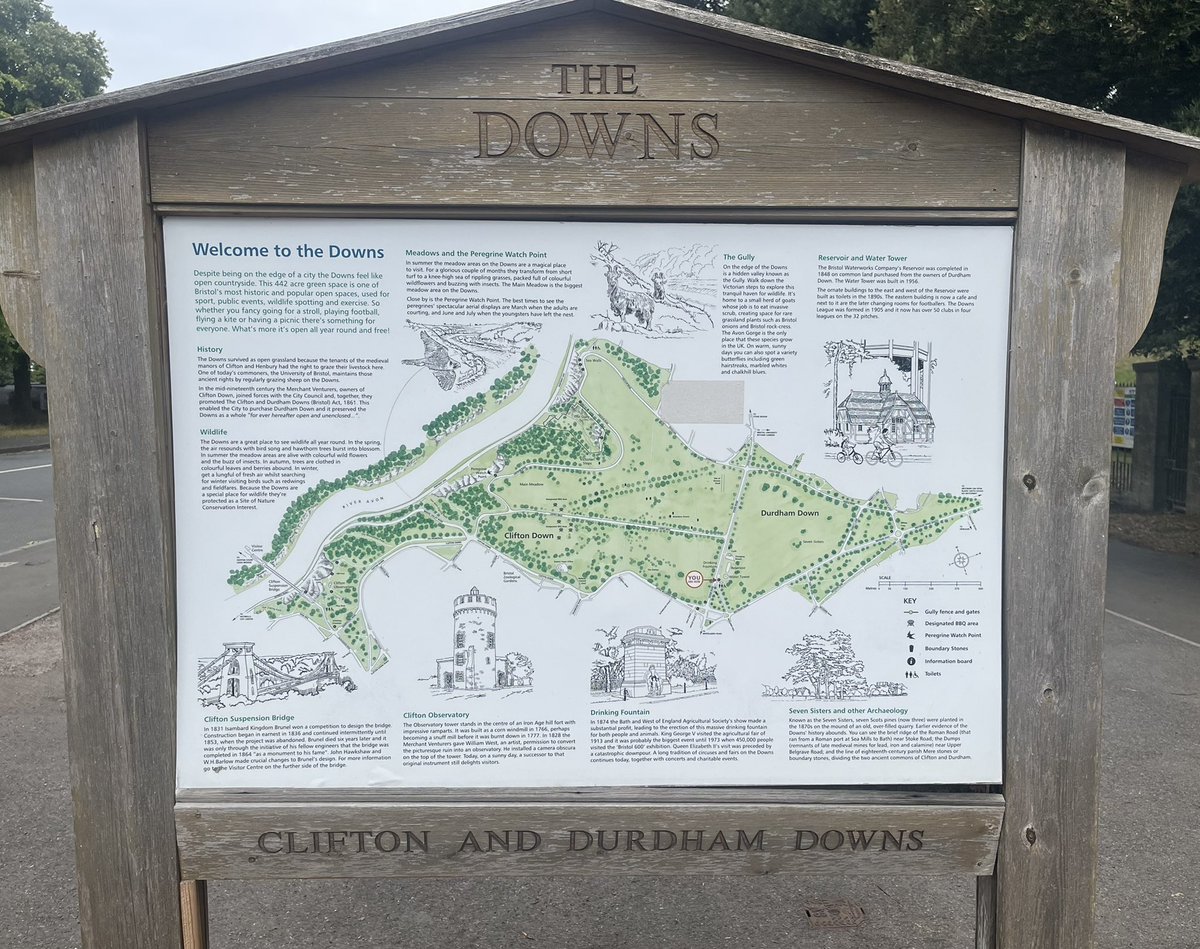
Weird Bristol
@WeirdBristol
Your guide to the hidden history of Bristol. WEIRD BRISTOL: TRUE CRIME is here: https://tinyurl.com/2k735t97
Enjoying a glass of sour tonic in the garden along with WEIRD BRISTOL: TRUE CRIME - released today! One hundred true stories of Bristol’s criminal past. From pirates and fraudsters to thieves and killers, take a tour through Bristol’s darkest corners… amazon.co.uk/Weird-Bristol-…

This building on Redcliffe Wharf was built from 1909-12 as warehouse for a nearby grain mill. It is an early example of a building made of reinforced concrete but with a red brick facing - meaning it was relatively cheap to build yet handsome and in keeping with its surroundings.

One of the many oddities of Bristol is why one of the highest points of the city is called the “Downs”. The name comes from the Celtic word “dūn”, meaning a grassy hill in southern England. The North and South Downs, Dorset Downs and Epsom Downs are also named for this reason.

This 1760 painting (thought to be by Philip Vandyke) shows Bristol in its heyday as a port of international importance - when the city was briefly the second largest in Britain.

It's also a pun honoring William Vick, whose bequest of money to build a bridge provided the first solid impetus for the project! Can also be read "The suspended road happens [through] Vick".
The Latin inscription on the Leigh Woods tower of the Clifton Suspension Bridge reads “SUSPENSA VIX VIA FIT”. There are several ways of interpreting this phrase and could mean “Road suspended with great difficulty” or a more alarming translation is “Road is barely suspended.”

Around the exterior of the Bristol Megascreen building there are 15 blue plaques which celebrate notable innovators and inventors in the fields of science and technology who have a connection to the city of Bristol.

The tower of Temple Church began tilting during its 1460 construction and now is only two degrees shy of the Leaning Tower of Pisa.

Until 1820, Newgate Prison (which stood where the Galleries Car Park now stands) was the largest prison in Bristol. Conditions were despairing, even for the age, one cell was underground and known as “The Pit”. It had straw instead of beds and housed up to 17 prisoners at once.

The John Sebastian is a lightship (a floating, moveable lighthouse) built in Bristol in 1885 and now permanently moored in Bathurst Basin. Over her distinguished career she is believed to have saved the lives of hundreds of seafarers. She is now the home of Cabot Cruising Club.

In January of 1802, a grisly discovery was made at the foot of Brandon Hill. The resulting murder investigation revealed a tale of desperation and a horrifying pact between two women. Read the shocking true story in my book WEIRD BRISTOL: TRUE CRIME. Link is in my profile.

For centuries, travellers to Bristol arrived via the Downs and as a result, the huge open space became dotted with coaching houses to allow these weary visitors a bed and a stable for their horses. The Old Halt was one such establishment and was built sometime during the 1700s.

Tube web spiders first arrived in Bristol sometime in the 1700s after hitching a ride on ships arriving from the Mediterranean. They burrow in holes in walls and form distinctive webs within. Their bite is said to be painful but as they seldom leave their burrows, bites are rare.


In the 1950s, a small village named Moreton was levelled and flooded to create Chew Valley Lake, just outside of Bristol. Most buildings were demolished but it is still possible to see the remains of walls, roads and even gardens, submerged for almost 70 years beneath the water.

Built in 1890, this building on Phoenix Wharf was once a fire boat station. A crew of firemen were based here & would put out fires on Bristol docks using fire-float vessels, including the Pyronaught (now moored by M Shed) The building is now an occasional art space and gallery.

The first people officially over the bridge when it opened was a samba band, but the dignitaries, developers & council leaders behind were blocked by Acorn members protesting at the lack of affordable housing at Finzel’s Reach. The dignitaries had to walk round.
Ahead of Castle Bridge being opened in 2017, a contest to name the crossing was held. The winner was local musician Barry Walsh, who chose the name in memory of Bristol Castle, which stood near to the site of the bridge from the late 11th century to the mid 17th century.

Before steps were installed in 1669, the lane now known as Christmas Steps was a steep dirt track and notorious as one of the most dangerous streets in Bristol. Violent muggers were said to push people down the hill to their deaths in order to rob them of their goods.

In 1965, following a Beatles performance at (what was then) Colston Hall, Paul McCartney and Jane Asher (his girlfriend at the time) met for drinks at the Llandoger Trow and then the Gryphon. Asher was in Bristol performing in a stage production of St Trininans at the Old Vic.

In the 1953 Ealing comedy film “The Titfield Thunderbolt” the role of Mallingford Railway Station was played by Bristol Temple Meads. The film’s closing scenes of the titular steamtrain reaching the end of its line also offer a brief glimpse of the city’s post-war skyline.
